Scientists believe that Maldive Islands were first settled by Aryan immigrants who are thought to have colonised Sri Lanka at the same time, (around 500 BC). Further migration from South India, as well as Sri Lanka, occurred. The latest archaeological findings suggest the islands were inhabited as early as 1500 BC. Around 947 AD, recorded contact with the outside world began with the first Arab travellers. As the population increased, the Maldivian people with their mixed features formed tight-knit island communities. Historical remains dating back to 400 BC show strong evidence that Buddhism was widely practised among the people. Islam came to the Maldives with the Persian and Arab travellers and in 1153 AD Arabian traveller Abul Barakhat Al-Bar Bari is said to have been responsible for the conversion to Islam. In 1558, the Portuguese invaded and captured the Maldives. They ruled the country for 15 years, until Boduthakurufaanu, the national hero recaptured the Maldives from the Portuguese. He ruled the country as Sultan Mohamed Thakurufaanu from 1573 – 1583.
The Maldives became a British Protectorate and a dependency of Ceylon (Sri Lanka) in 1887 and remained so until 26 July 1965 when they gained full independence. The independent Maldives reverted from a Sultanate to a Republic on 11th November 1968 and since then the country has remained a fully independent republic.
The first resort, Kurumba Village was developed in 1972, on an uninhabited island near the capital, Malé. The resort, had accommodation for about 60 guests. The second resort was Bandos, with about 280 beds. The services in the two resorts were quite basic compared to that of others in the region. The food was mainly local and the transportation quite slow. It was also a time when air travel to the Maldives was only available on Air Ceylon which operated a small Avero aircraft. This plane carried only 48 passengers and took two hours to reach Malé from Colombo. Despite this, over a thousand tourists came to the Maldives in 1972. In 2003 the Maldives consists of more than 80 resorts, and over 500,000 visitors from all over the world. Italian visitors account for approximately 25% of all visitors, followed by the UK at 17%, Germany at 14% and Japan at 9% and the average stay is 8.5 nights.
The Maldives hold the record for being the flattest country in the world, with a maximum altitude of only 2.3 metres. Although there have been reports of rising sea levels threatening the islands, the sea level has actually lowered in recent decades. There are said to be 199 inhabited islands and 993 uninhabited islands.
The December tsunami reached the Maldives at approximately 9.20am on 26 December 2004, sending waves up to five metres high over the 1192 islands. The disaster is believed to have caused damage to 69 of the 199 inhabited islands and 14 islands are said to be completely devastated and had to be evacuated. In total, some 20,500 islanders were displaced from their homes and 83 people were killed, including three tourists. A further 25 people are still missing and presumed lost in the disaster.
Even before the disaster, environmentalists were concerned about the risk to the islands from rising sea levels. The most serious damage was to the islands along the east coast of the group, particularly in North Malé Atoll and South Malé Atoll, but the capital, Malé, and the international airport on Hulhule island experienced only minor flooding. The tsunami also caused significant damage in the far south of the Maldives, particularly to Vilufushi in the Thaa Atoll and Kolhufushi in the Meemu Atoll. In the north, Kandholhudhoo island in the Raa Atoll was completely destroyed, displacing 3,000 islanders from their homes. The island has since been abandoned. Cartographers are planning to redraw the maps of the islands due to alterations by the tsunami.
Despite the massive damage to homes, schools, harbour facilities, telephone and electricity suppliers and general infrastructure, the loss of life was thankfully comparatively small, especially when compared with Indonesia, Sri Lanka, India and Thailand. Still, estimates suggest that around 7% of the population has been left homeless by the disaster and the overall cost of damage is estimated at US$470 million, or 62% of the islands' GDP. The government has reported that the impact of the tsunami will set back development in the Maldives by two decades.
Despite this, the emergency relief effort has been extremely successful, though some would say that it has been challenged to the areas most frequented by tourists. As of March, 71 of the 87 resorts in the Maldives were open as normal and tourists could visit Malé and other areas that escaped major damage without problems. However, 16 resorts remain closed as a result of the disaster – for an update on the 16 hotels that are closed, see: www.visitmaldives.com.mv
No prior visa arrangements are required, but some requirements must be fulfilled to obtain a 30 days tourist visa on arrival: a visitor must have a valid travel documents and properly completed embarkation/disembarkation cards which usually provided at during the inward flight. In addition, visitors must also have a return air ticket or at least US$ 50.00 per intended day of stay in Maldives. Any amount of Foreign currency can be brought in without declaring and can be taken out without any restriction. Some items are forbidden to be imported to the country, including firearms and explosives, pornography of any kind, including what would be considered “acceptable erotica” in all western (and most eastern) societies, pork and all products containing pork, narcotic drugs, poisons and hazardous, irritable or industrial chemicals and alcohol. Alcoholic items purchased on the trip will be held in Customs bond for collection upon departure.

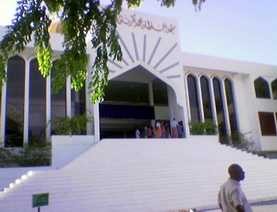
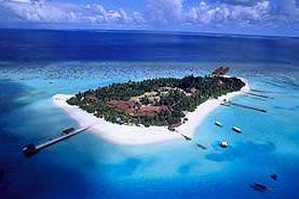
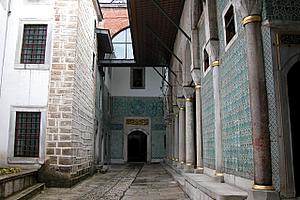
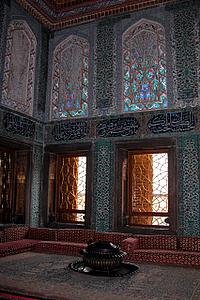

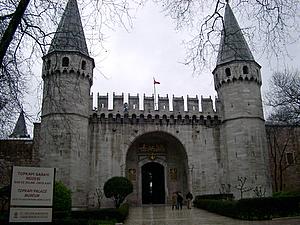
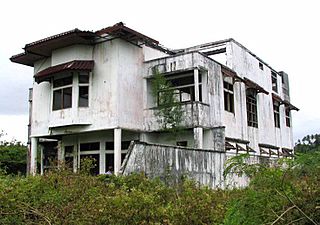 The killing is over on Ambon, the hub of the Moluccas, or Spice
Islands, in Indonesia. There is an invisible line drawn between the
Christian and Muslim sectors in the City – it is still dangerous to
stop on the wrong side. The burnt out churches, houses and even
university buildings are reminders of the carnage that occurred a
short while ago, when Ambon was likened to Beirut at its worst.
“So it was a religious war?” I enquire. “Not really,
more the result of political manoeuvrings. Now we have peace and
democracy, but no jobs, clean streets or reliable infrastructure,
the opposite of neighbouring Singapore.” Almost incredibly,
fair and trouble-free elections had just been completed, much to
the surprise of the incumbent president, who refused to accept
defeat. “I would rather be in the hands of the Chinese army
than the Indonesian”, a French photo-journalist told us later,
after describing how he had to injure himself to persuade the
Chinese soldiers to release him. “You won't be killed or
“disappear” in their custody.”
The killing is over on Ambon, the hub of the Moluccas, or Spice
Islands, in Indonesia. There is an invisible line drawn between the
Christian and Muslim sectors in the City – it is still dangerous to
stop on the wrong side. The burnt out churches, houses and even
university buildings are reminders of the carnage that occurred a
short while ago, when Ambon was likened to Beirut at its worst.
“So it was a religious war?” I enquire. “Not really,
more the result of political manoeuvrings. Now we have peace and
democracy, but no jobs, clean streets or reliable infrastructure,
the opposite of neighbouring Singapore.” Almost incredibly,
fair and trouble-free elections had just been completed, much to
the surprise of the incumbent president, who refused to accept
defeat. “I would rather be in the hands of the Chinese army
than the Indonesian”, a French photo-journalist told us later,
after describing how he had to injure himself to persuade the
Chinese soldiers to release him. “You won't be killed or
“disappear” in their custody.”
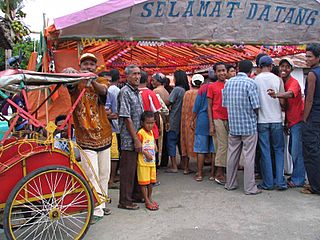 With two friends I drove across the spine of Ambon to Hila, an old
village overlooking the much larger island of Ceram, passing
countless cloves and nutmegs drying in the sun on the roadside. It
was hard to believe that centuries ago such spices were valued more
highly than gold, with the result that the islands were a
battle-ground for the colonial powers, ending when we swapped our
land there for New York, after smuggling out seedlings to establish
plantations in India! We hiked up a steep trail, through spice
plantations, to a ridge with a spectacular view over the partially
forested hillsides. Here we strove to observe two species of
parrots endemic to these islands, which we could hear but not see.
We returned early the following morning and were rewarded by the
sight of the electric Moluccan Red Lory and the “poorly
known”, to quote the bird book, but well-named Drab
Honeyeater. On the drive back to the airport, we stopped to chat
and photo the friendly locals, many of whom were Muslims.
With two friends I drove across the spine of Ambon to Hila, an old
village overlooking the much larger island of Ceram, passing
countless cloves and nutmegs drying in the sun on the roadside. It
was hard to believe that centuries ago such spices were valued more
highly than gold, with the result that the islands were a
battle-ground for the colonial powers, ending when we swapped our
land there for New York, after smuggling out seedlings to establish
plantations in India! We hiked up a steep trail, through spice
plantations, to a ridge with a spectacular view over the partially
forested hillsides. Here we strove to observe two species of
parrots endemic to these islands, which we could hear but not see.
We returned early the following morning and were rewarded by the
sight of the electric Moluccan Red Lory and the “poorly
known”, to quote the bird book, but well-named Drab
Honeyeater. On the drive back to the airport, we stopped to chat
and photo the friendly locals, many of whom were Muslims.
 The main reason for going to Ambon was to take a flight to the
rarely visited Tanimbar Islands, some two hours east of Ambon. The
only flights were with Merpati, whose slogan “Get the
feeling” aptly described schedules in these parts as feelings
were all you could rely on, with nobody outside their office in
Ambon knowing when such flights would occur. Fortunately, we were
able to fly to Saumlaki on Yamdena, the main island of the
Tanimbars, on the desired day, a most uncomfortable experience in
an ancient 22-seater. We then discovered that we could not fly to
the relatively close Kai Islands as we wanted, flights having been
suspended, and the flight we had “booked” back to Ambon
did not run that day. As the previous day was full, we got a
booking for the day after, but no tickets as the agent had gone to
the airport to investigate why the plane had returned. The answer
was that the pilot had felt ill and so decided to come back to
Saumlaki, apparently not trusting his co-pilot to take-over.
The main reason for going to Ambon was to take a flight to the
rarely visited Tanimbar Islands, some two hours east of Ambon. The
only flights were with Merpati, whose slogan “Get the
feeling” aptly described schedules in these parts as feelings
were all you could rely on, with nobody outside their office in
Ambon knowing when such flights would occur. Fortunately, we were
able to fly to Saumlaki on Yamdena, the main island of the
Tanimbars, on the desired day, a most uncomfortable experience in
an ancient 22-seater. We then discovered that we could not fly to
the relatively close Kai Islands as we wanted, flights having been
suspended, and the flight we had “booked” back to Ambon
did not run that day. As the previous day was full, we got a
booking for the day after, but no tickets as the agent had gone to
the airport to investigate why the plane had returned. The answer
was that the pilot had felt ill and so decided to come back to
Saumlaki, apparently not trusting his co-pilot to take-over.
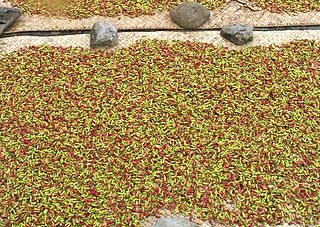 The Tanimbars are at almost the south-eastern extremity of the 5000
km long Indonesian Archipelago, only 150 km from the coast of
Australia. Unlike most of the country, the population is
predominantly Christian. At the Harapan Indah, the only hotel in
town, we arranged to stay at the owners' farm 21 km along the
island's only road, so that we had ready access to the native
forest. By the time we reached the farm, after supplies had been
purchased, including a crate of beer, it was raining – the first
time for 4 months so it was said. We had come here to try to see
the 20 or more special birds endemic to these parts, a surprisingly
high number for such a relatively small area. When the rain
stopped, we set forth, amongst much bird activity, but were
disappointed to find the extensive forest reported to be present by
the last person we knew to have visited, some 10 years ago, had
gone and only patches of logged forest remained.
The Tanimbars are at almost the south-eastern extremity of the 5000
km long Indonesian Archipelago, only 150 km from the coast of
Australia. Unlike most of the country, the population is
predominantly Christian. At the Harapan Indah, the only hotel in
town, we arranged to stay at the owners' farm 21 km along the
island's only road, so that we had ready access to the native
forest. By the time we reached the farm, after supplies had been
purchased, including a crate of beer, it was raining – the first
time for 4 months so it was said. We had come here to try to see
the 20 or more special birds endemic to these parts, a surprisingly
high number for such a relatively small area. When the rain
stopped, we set forth, amongst much bird activity, but were
disappointed to find the extensive forest reported to be present by
the last person we knew to have visited, some 10 years ago, had
gone and only patches of logged forest remained. 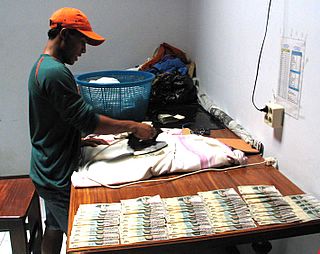 However, over the
next 4 days we saw all the specialities, including 2 parrots, 2
thrushes and 5 flycatchers, apart from the Tanimbar Scrubfowl,
sadly scarce or elusive due to hunting, and the Pied Bronze Cuckoo.
Strangely, I had recorded the song of the cuckoo on the first
afternoon, but never heard it again. According to the book, it
parasitizes the endemic Rufous sided Gerygone, but the only bird to
react to the playback of its song, on several occasions, was the
Wallacean Whistler – indicating that this species is the main host
for the cuckoo's eggs.
However, over the
next 4 days we saw all the specialities, including 2 parrots, 2
thrushes and 5 flycatchers, apart from the Tanimbar Scrubfowl,
sadly scarce or elusive due to hunting, and the Pied Bronze Cuckoo.
Strangely, I had recorded the song of the cuckoo on the first
afternoon, but never heard it again. According to the book, it
parasitizes the endemic Rufous sided Gerygone, but the only bird to
react to the playback of its song, on several occasions, was the
Wallacean Whistler – indicating that this species is the main host
for the cuckoo's eggs.
 On the last afternoon, we visited the old village of Turgham. We
started at the mayor's house, where a meeting of the village
elders was in progress. After mutual greetings, we signed the
visitors book, noting that all previous visitors of the last 2-3
years looked to be either Indonesians or Australians, the latter
associated with the annual Darwin to Saumlaki boat race apparently.
At a wood-carver's house we bought a number of carvings from
the selection on offer by several local artists – good quality and
value. We were invited to drink a glass of Soli, local spirit
distilled from palm wine- highly alcoholic and surprisingly smooth.
Returning to the Harapan Indah in Saumlaki, we enjoyed the
air-conditioning, until ended by a power cut, and were amused to
observe the staff ironing banknotes flat, perhaps to facilitate
storage as even the smallest item can require a large number of
notes, the exchange rate being 16, 000 Rupiah to the pound. The
trappings of civilisation are a bit thin on the ground here: no
mobile phone cover, internet access or shopping malls. Predictably,
our flight was delayed by late arrival of the plane but this gave
us chance to study the profusion of Oriental Plovers and Little
Curlews on the runway – two species rarely encountered away from
their wintering grounds in northern Australia. It was a shame we
could not fly to Kai but we all agreed this last minute extension
to our eastern Indonesia trip had been a highly rewarding and
pleasant experience.
On the last afternoon, we visited the old village of Turgham. We
started at the mayor's house, where a meeting of the village
elders was in progress. After mutual greetings, we signed the
visitors book, noting that all previous visitors of the last 2-3
years looked to be either Indonesians or Australians, the latter
associated with the annual Darwin to Saumlaki boat race apparently.
At a wood-carver's house we bought a number of carvings from
the selection on offer by several local artists – good quality and
value. We were invited to drink a glass of Soli, local spirit
distilled from palm wine- highly alcoholic and surprisingly smooth.
Returning to the Harapan Indah in Saumlaki, we enjoyed the
air-conditioning, until ended by a power cut, and were amused to
observe the staff ironing banknotes flat, perhaps to facilitate
storage as even the smallest item can require a large number of
notes, the exchange rate being 16, 000 Rupiah to the pound. The
trappings of civilisation are a bit thin on the ground here: no
mobile phone cover, internet access or shopping malls. Predictably,
our flight was delayed by late arrival of the plane but this gave
us chance to study the profusion of Oriental Plovers and Little
Curlews on the runway – two species rarely encountered away from
their wintering grounds in northern Australia. It was a shame we
could not fly to Kai but we all agreed this last minute extension
to our eastern Indonesia trip had been a highly rewarding and
pleasant experience.